Arin Tracht
“It kept the howl of the ridge outside my breath and the echo of my heartbeat inside my chest, and for that single night the mountain felt smaller than the warmth beneath that hood.”
Night wind slides along the knife ridges of The Agriss Mountains and a lone scout moves within the storm as if frost and granite have agreed to carry her weight. Every line of cloth that clings to her does more than keep her warm. It holds the memory of generations who learned that warmth means speed, speed means safety, and safety is the only luxury the high country allows. She wears tracht, and among the Arins that word needs no translation. It is the garment that speaks for the mountain itself.
Closest to the skin lies a fitted weave of spun fleece taken from sheep that graze where even griffons seldom land. The yarn is boiled, combed, and carded until it feels like soft stone, yet it wicks sweat before the chill can steal heat. At the throat and wrists, smooth panels of cavern silk lie against the flesh. Elven weavers raise their silkworms in the silent dark beneath Areeott’s cities, and the resulting thread gleams like moonlit water but behaves like a second layer of skin.
Over the inner cloth sits a quilt that feels almost weightless. Each pocket is stuffed with down gathered from the annual molting of sacred griffons and the rare remains of rocs found on lonely peaks. The down is sorted by warmth and loft, then stitched into a lattice that drapes without sagging. No single seam aligns with another so wind can find no path inside.
The outer shell looks humble to an untrained eye. Farmers grow the flax in narrow terrace plots, then beat, soak, and spin it before coating each strand in a slurry of pine resin, charcoal dust, and beeswax. Once cured it bends only where the body bends and shrugs off sleet as easily as it sloughs sparks from a hearth. Sleeves, knees, and shoulders carry extra layers of rawhide that soften blows and protect the insulation beneath.
A cloak of felted wool is pinned over one shoulder with a carved piece of bone. Its underside holds a lining of silk that traps rising body heat when the scout stops to rest. In motion the cloak can unfurl, break swirling snow, then collapse again with a pull of cord. When sleep comes, the same wool becomes a ground sheet, its edges lacing together to form a narrow pocket of breath and warmth.
The mask that guards her breath is hewn from roc bone. Bonewrights soak the shards in heated water scented with crushed pine until the marrow tunnels widen. They press the softened bone over a wooden mold, carve a network of spirals that swirl from nose bridge to chin, then seal it with resin steeped in mountain herbs. The finished mask hugs the nose and mouth, capturing exhaled heat and lending it to the next breath. A scarf sewn directly to the mask wraps three full turns around jaw and throat, tying the apparatus tight enough that only mist escapes, never warmth.
Gloves grow directly from the coat sleeves. They divide thumb from the rest of the hand, allowing a sure grip on bowstring or staff while tucking the remaining fingers into a single warm pocket. Boots rise to mid calf and layer silk, wool, dried moss, and bark laminate until each step lands soft and silent. Cord lacing winds from arch to knee, never cinched so tight that blood flow slows, yet firm enough to keep drift snow from creeping inside.
Weapons nest within the tracht as naturally as bones within flesh. A bow of horn and sinew angles across the back, its string rubbed with wax to keep ice from forming. Under the cloak lies a walking staff that hides a slender blade inside an ash shaft. A short straight sword rides the hip in a bark scabbard, lacquered to match the coat so no glint betrays position. Every piece balances so well that the scout can sprint uphill without cloth or wood clattering.
In the lowlands merchants speak of the tracht as rare art, but Arins know it as ordinary necessity. It is sewn at kitchen tables and in lofts that ring with loom songs, patched in watch towers during quiet hours, blessed with pine smoke before a winter patrol. Children learn the knot that binds scarf to mask before they learn their letters. Elders die with the scent of resin still clinging to the bone that guarded their last breath.
On a clear dawn after storm light, a traveler in tracht may appear where nothing stood the night before, bow lowered, mask rim crusted with frost that glitters like silver leaf. Step after silent step she crosses the ridge until even her footprints fade beneath drifting powder, and the mountain keeps its secrets a little longer.
Mechanics & Inner Workings
“Pages claim the Agriss are unforgiving. They have never stood inside a down-lined hood and felt winter wait outside the seams.”
Warmth begins its journey against the skin. Undyed wool, densely woven from sheep bred on wind-scoured slopes, wicks sweat into tiny air gaps where it can evaporate without robbing heat. Silk taken from cavern-raised worms lies hidden inside each cuff and collar. The thread is so fine that water rolls across its surface, yet it breathes with the rhythm of a pulse. When body heat rises the silk opens its weave just enough to let vapor pass. When a chill strikes it contracts, closing like a living scale and holding warmth close. Over this foundation sits a quilt of griffon and roc down. Every feather is cleaned, dried, and lofted until it floats on the breath of a whisper. Artisans sew the down into diamond-shaped cells that overlap like fish scales. The staggered seams force wind to bend and double back before it can reach the skin. Air trapped inside the down warms almost instantly, creating a light barrier that moves with the body rather than against it. The outer shell is linen boiled in pine resin and sealed with beeswax. During curing, crafters stretch the cloth on cedar frames until it stiffens into a weather skin that refuses to crack even at forty below. Resin molecules lock into the linen fibers, forming countless micro ridges that break water into beads which slide away before they can freeze. Hide reinforcements at elbows, shoulders, and knees absorb impact while keeping the shell’s weight low. The result is armor that bends only where muscles need to bend, never where wind hopes to pry. Breath finds refuge in a mask carved from roc bone. Bonewrights simmer rib shards in honeyed water until marrow channels swell open. After shaping, they line those channels with powdered sage and pine pitch. Each time the wearer exhales, warmth clings to the porous walls. Inhaling draws the stored heat back across the lips and into the lungs. Cold air softens, condensation settles behind the resin coat rather than icing on the surface, and lungs remain supple on ridges where a single gasp can freeze blood in the throat. A scarf sewn directly to the mask anchors the cup in place. Three tight wraps cross the jaw and throat, knotting behind the crown so wind cannot tug the seal loose. Silk threads hold the knot firm while allowing a sleeper to turn without choking. The same scarf channels condensation toward the collar where it wicks into a wool-silk sponge and evaporates before it can stiffen cloth. Gloves grow straight out of the sleeve cuffs. The palm layer is sharkskin texturised goat hide that clings to stone even when rimed with frost. Inside lies rabbit down shaped into separate pockets for each knuckle so fingers stay limber without bulk. Boots follow the glove’s principle. Layers of moss, silk batting, and wool line a bark laminate sole. The sole flexes around rocks yet insulates like a slab of cork. A lattice of twine laced from arch to calf keeps the boot snug without metal hooks that could snap in cold snaps. Every seam is stitched in a spiral pattern. Straight seams split under torque, but spirals distribute force along a curve, allowing the garment to twist without tearing. Even the arrow quiver follows this rule, its hide body coiled around a bone spine so it can flex against the back during climbs. None of these parts matter alone. Together they create a living cycle of heat, breath, and movement. The suit catches warmth the instant it leaves the body, stores it in feathers and bone, then feeds it back on every inhale. Water escapes but never stays long enough to freeze. Wind meets resin ridges and down pockets, losing strength with every turn. The wearer remains warm, dry, and silent, able to draw a bow, swing a staff, or crawl beneath an overhang without cloth cracking or mask fogging. In the Agriss Mountains that balance of silence and breath is the difference between a story told beside the hearth and a cairn of stones on a forgotten ridge.
Manufacturing process
“Sing low and stitch slow the mountain listens for the sound of loose seams.”
Wool gathering begins when the first thaw softens the high pastures. Shepherds pen their mountain sheep at dawn, sheer the dense winter fleece in long clean strokes, and soak the cut wool in meltwater pools until the last grit floats free. Women paddle the fleece in ash lye beside low fires, rinse it in running streams, and wind the drying fibers onto wicker frames that turn with the valley breeze. Spinners pull the cleaned strands into tight yarn and coil them in cedar baskets until the looms are ready. Griffon down enters the workshop after the midsummer molt. Climbers scale vacant roost ledges, scoop the soft underfeathers into oilskin bags, and lower the haul by rope to the valley floor. The down is smoked lightly over sage to remove mites, then beaten between willow wands until each tuft rises weightless. While that work continues, bales of flax straw arrive from river farms. Retters soak the stalks in shallow ponds, break the stems once the fibers separate, and draw the blond strands through iron combs. The combed flax is spun into cloth that waits for the resin bath. Outside the main cave mouth, terraces cling to a sunny cliff. Snowleaf shrubs grow there in thin soil warmed by reflected light. Harvesters cut branches laden with waxy leaves and carry them inside the threshold. A single sunshaft, split by mica mirrors, spreads pale light across stone beds where fresh cuttings take root. Gardeners soften select leaves in warm water that strips the outer wax before feeding them to the cave raised silkworms. When the cocoons swell with thread, keepers transfer them to resting shelves within the warmest vaults and wait. Only after the moths emerge naturally do apprentices gather the emptied husks, rinse them in meltwater, and begin to tease out the filaments. The resulting fiber is spun into Virellen, a wool soft, cloud light silk that retains its shape without harm done to the life that made it. Flax cloth steeps in pine resin mixed with beeswax until every thread darkens. Workers stretch the hot fabric on oak frames, scrape surplus resin with bone blades, and polish the surface to a quiet sheen. In an adjoining chamber bone wrights boil slabs of roc rib until the marrow tunnels bloom. They press the softened bone over wooden nose forms, carve a spiral airway along the interior, and seal the cup in sage scented resin. Once cool, each cup slides into the heart of a wool silk scarf that will anchor the mask to the wearer’s face. Assembly unfolds in a hall lit by oil lamps. Tailors stitch the wool shirt first, turning every seam in a continuous spiral so the cloth never splits under strain. Quilted panels of griffon down are basted to the torso and limbs, then overlayed by the cured resin cloth which is laced through hidden eyelets rather than sewn. Silk bands reinforce cuffs, inner collar, and the edges of the scarf. Gloves and boots attach directly to the sleeves and leggings, their interiors stuffed with moss and lined with silk for insulation. Finished suits hang overnight above a cedar hearth. Warm air sets the cloth memory and draws out any lingering moisture. At dawn a master tailor rubs beeswax along the outer shell, checks each knot of cord, and folds the tracht into a waxed hide carrier. Inside the bundle rest a spare silk coil, a thumb sized jar of pine resin for field repairs, and a single sentence written on rough paper. The note reads, Breath is precious, guard it well.
History
“Put on the cloak, close your eyes, listen. That hush you hear is the mountain agreeing to let you stay.”
The first Arin herders wrapped themselves in coarse wool mantles when they followed shaggy goats above the tree line. Their garments were nothing more than stitched blankets, heavy with lanolin and hearth smoke, but they kept flesh from stiffening on moonlit slopes. When storms pressed harder and nights grew longer, the shepherds learned to stuff dried grass between layers of cloth to trap air, then stitched the seams with sinew so no thread unraveled in sleet. Two winters later hunters returning from a distant cirque carried packs lined with moss, and moss became the new stuffing. The earliest version of the tracht was born without ceremony, stitched in lamplight while children slept. Generations passed, and the goats wandered higher than ever. Wind cut deeper too. The Arin answered by quilting goat fleece into pockets the size of a thumb joint, careful that no two seams met. Their coats gained weight but they learned to sleep through blizzards. When a stone carver discovered frost burned lungs can be soothed by breathing through small reed bundles, every fire pit filled with split reeds. These bundles stiffened in cold air, so the elders turned to horn scraps, then to hollow bones scraped glittering clean by river sand. Each new season forced another revision, yet no one thought of the suit as invention. It was simply survival in cloth form. A day came when a hawk watcher found a fallen griffon upon a ridge. The bird’s breast broke open under the weight of snow and its down drifted like silver ash. The watcher stuffed a pouch with the softest tufts, pressed them into his shoulder lining, and walked home without the familiar sting of wind inside his coat. Word flew through the cantons. Down supplanted moss in chest pieces and hoods. Hunters treasured any fallen feather, yet griffons remained unharmed, for Arins harvested only what nature surrendered. Time rolled forward until the craft of bone carving met its quiet master. A lone artisan boiled small slabs of roc rib in pine resin water, then wrapped the softened bone around a clay nose form. The piece cooled into a cup laced with tiny tunnels where marrow once lived. The artisan exhaled through the cup and felt warm air return. He stitched the cup into a scarf, tied it across his face, and named it breath stone. Mask carving spread from village to village faster than any song. Within a decade no climber left the valley without one. Elves arrived almost seven centuries ago, not through Stormwatch Pass which remains the Arin shield wall even now, but along lesser known trails guided by stone cairns and hard bargains. They arrived wearing silk so fine it folded like water. Arin guides could not fathom cloth that shed sleet as well as waxed hide, yet tests in the bitter wind proved the claim. The newcomers bartered bolts of their cave grown silk for grazing rights and passage. Arin tailors unraveled a few lengths, spun them into wool cuffs, and found the cuffs dried before dawn. No one called it a miracle, only progress. Silk moved inward, first at cuffs and collars, then across entire inner garments. Tracht became lighter, less abrasive, far kinder to restless skin. Silk did not erase the old materials. Wool still formed the heart of every coat, down still warmed the core, bone still guarded breath. Silk merely filled the narrow spaces moss and grass once occupied. It reduced weight so scouts could carry rope or extra arrows instead of bulk. Because elves kept their silk guilds private, the thread remained precious. Whole families saved for seasons to add a single panel beneath an elder’s cloak. Guilds rose among the Arin as well. Weavers met at summer markets to compare stitches and decide which patterns held warmth longest. Bonewrights shared new shapes for mask vents, testing them by standing through the first autumn gale on the same cliff ledge. Hunters who supplied feathers learned to trim barbs so no draft robbed loft. The tracht was never patented, never owned. Its makers improved it communally, one seam at a time. During the third age, a span historians quarrel over but villagers mark by the frost famine, caravans fighting for the last open passes learned to hire guards clad head to toe in tracht. These guards lay under drifts for hours, arrows ready, breath cloaked by resin scented bone. Raiders who charged the road found snow rise up and strike them. Merchants began to describe the suit as the quiet coat, a name spoken with gratitude and a hint of dread. Modern tracht shows the fingerprints of every century. Silk threads now reach the ankles, yet the outer shell still smells of pine pitch. Masks shine pale in starlight, yet every one carries a thumb print left by its carver. Children learn to sew patch seams before they can read trail runes, and when they reach sixteen they inherit a hand me down scarf and bone cup, stained by years of resin. If the cloth finally fails, families dismantle it with care. Silk becomes lining for a newborn’s wrap, down feathers travel into arrow flights, and bone shards join charm bracelets that jingle softly when wind shifts. No lord claims invention, no archivist records a single date of creation. The suit exists as old as the first trail carved above the tree line, as fresh as each winter’s new stitch. Travelers who pause at dawn sometimes glimpse a figure moving where snow meets cloud, cloak trailing, mask glittering. They do not know the name tracht, but they understand what they see. A person wrapped in the long memory of the mountains, walking a path kept open by every hand that ever pulled needle through wool.
Significance
“You may pray to distant gods, but a bone mask will answer faster.”
A single suit of tracht is never just protection against the cold. It carries the weight of oaths spoken in valleys long forgotten and prayers whispered by hunters who vanished into white squalls. When an Arin steps onto a ridge wrapped in wool, down, silk, and bone, every layer reminds them that someone before survived this climb and left knowledge stitched into cloth. Villagers passing a cloak from grandmother to grandchild call it handing off a winter’s worth of breath. The fabric keeps stories alive where ink would freeze. Masks carved from roc bone hold a reverence deeper than any family crest. A mask receives its owner’s first breath the moment resin hardens and never truly gives that breath back. When a scout dies, the mask is broken and its shards buried in a cairn beside the trail. Travelers who see those cairns pause with uncovered heads, because they know the stone heaps mark places where the mountain demanded a toll and was paid in silence. Each cairn stands as proof that the path ahead can be walked, even if it was once walked at a cost. Trade routes that skirt the high passes rise or fall on the presence of tracht clad escorts. Merchants trust an escort wearing guild marked cloth because they believe the suit itself will outlast any ambush, storm, or sudden slide. Silk inner seams woven in deep city caves link the wealth of lowland markets to the frost line beyond which coin alone cannot purchase passage. Grain, silver, and quarried stone flow inland because the suit exists, and every canton tithes a portion of its prosperity to the guilds that maintain the craft. Tracht has also reshaped the cadence of Arin life. Children practice the anchor knot before they master their letters, and a youth who ties it without guidance earns a quiet clap on the shoulder from any elder who notices. Courtship gifts rarely involve flowers or jewels. Instead a would be partner offers a carefully stitched patch meant to cover an elbow or reinforce a boot tongue. Marriages are announced by presenting a new cloak to the couple, dyed in subdued valley greys so the pair can share its warmth on high trails. Feather down and silk thread move through the black markets of the largest cities, tempting smugglers who see only profit in a pouch of loft or a spool of luminous yarn. Guild guards treat such theft as more than property crime. They explain that stealing materials meant to keep breath warm is no better than stealing the breath itself. Punishment is swift and involves days of patrol duty at the freezing edge of civilization until the thief understands the weight carried by each plume and filament. The suit even guides Arin diplomacy. When emissaries from distant lowlands negotiate safe passage, the first gesture of goodwill is to sit near a brazier and loosen their cloak ties, showing respect for the heat that tracht protects. If a guest refuses to unveil their scarf and mask indoors, hosts assume a lack of trust and the meeting seldom moves past pleasantries. In rare moments of grave alliance, an elder might unpin their cloak and place it around a visitor’s shoulders. Such a gift obliges the recipient to honor the cloak’s lineage, for it cannot return to the guild once it has left Arin hands. Artists tell legends in needle and thread, embroidering faint silk spirals along the hems of ceremonial cloaks. The spirals mimic the hidden airways inside bone masks, reminding the wearer that breath must circulate to remain warm. No ballad or painted mural resonates as deeply among the cantons as a quietly repaired elbow seam, because that seam holds proof that someone finished a journey and came home to mend their coat rather than leave it to strangers. In times of famine or siege, communities gather discarded scraps of tracht and stitch them into long quilts that cover nursery floors and infirmary beds. The quilts smell of pine resin and old snow and are believed to draw sickness into their fibers. When the crisis passes, the quilts are burned outside town walls at sunrise, and the smoke drifting upward is watched with a calm usually reserved for funerals. Ashes are collected and mixed into resin for the next season’s masks, closing the circle between protection and memory. Tracht shapes how the Arins see distance. A league walked in ordinary clothes is mundane. The same league crossed in full suit feels shorter, safer, almost intimate, because the suit shields the wearer from the elements yet keeps the pulse of the air against their skin. Climbers speak of hearing the cloth breathe along with them, as if it carried the breaths of everyone who had ever worn it. No edict governs these customs. No scripture names the suit sacred. Yet when wind knifes through the Agriss and a lone silhouette appears on a ridge wrapped in layers that glow silver in moonlight, every hearthside conversation pauses. People know what they are seeing. They see a life preserved by the combined labor of shepherds, feather gatherers, silk wardens, bonewrights, and stitchers stretching back before any chronicle began. They see the living scripture of the mountains, written not in words, but in warmth that refuses to be stolen.
“They call it a coat. I call it a gate that keeps death from stepping any closer than my shadow.”




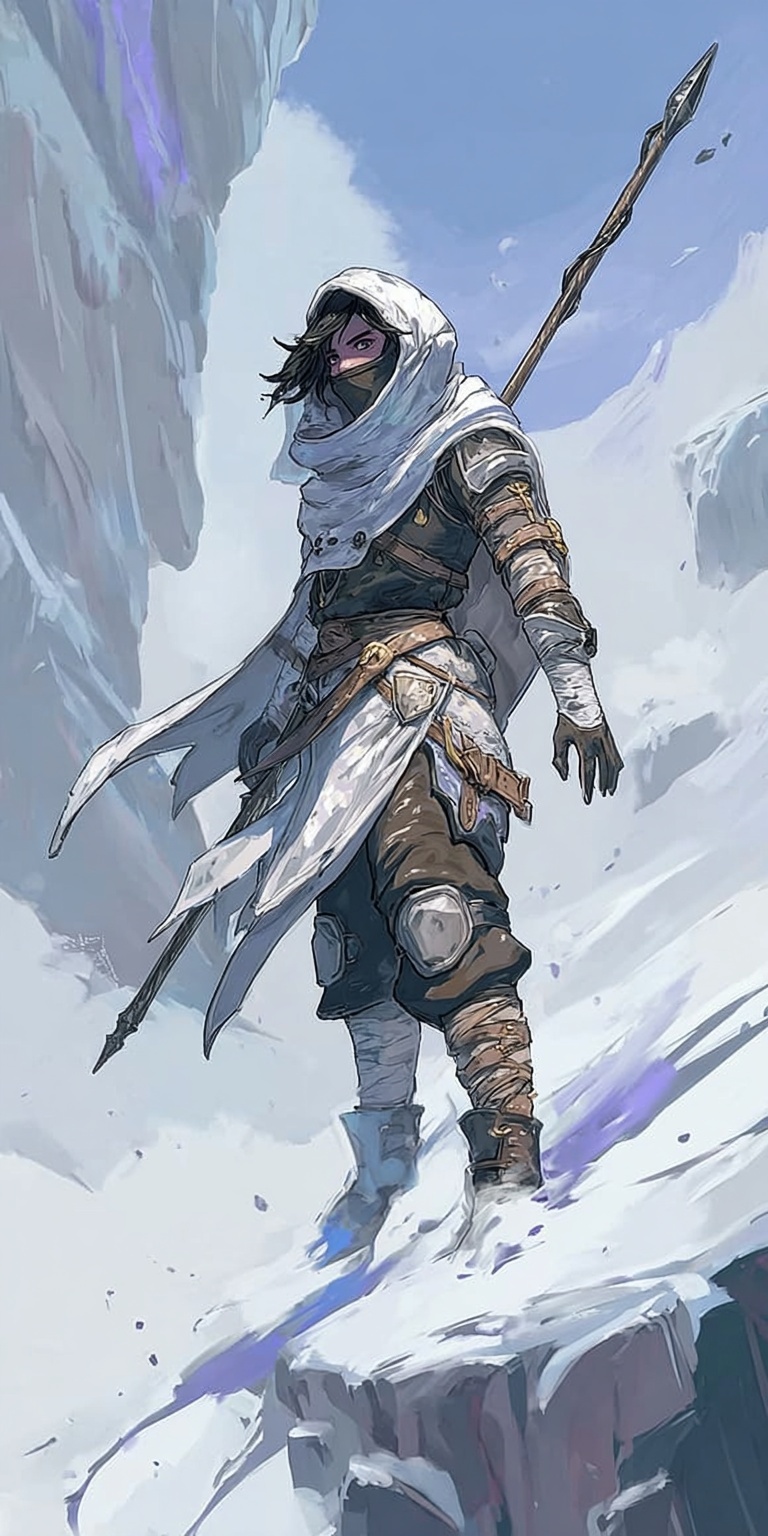
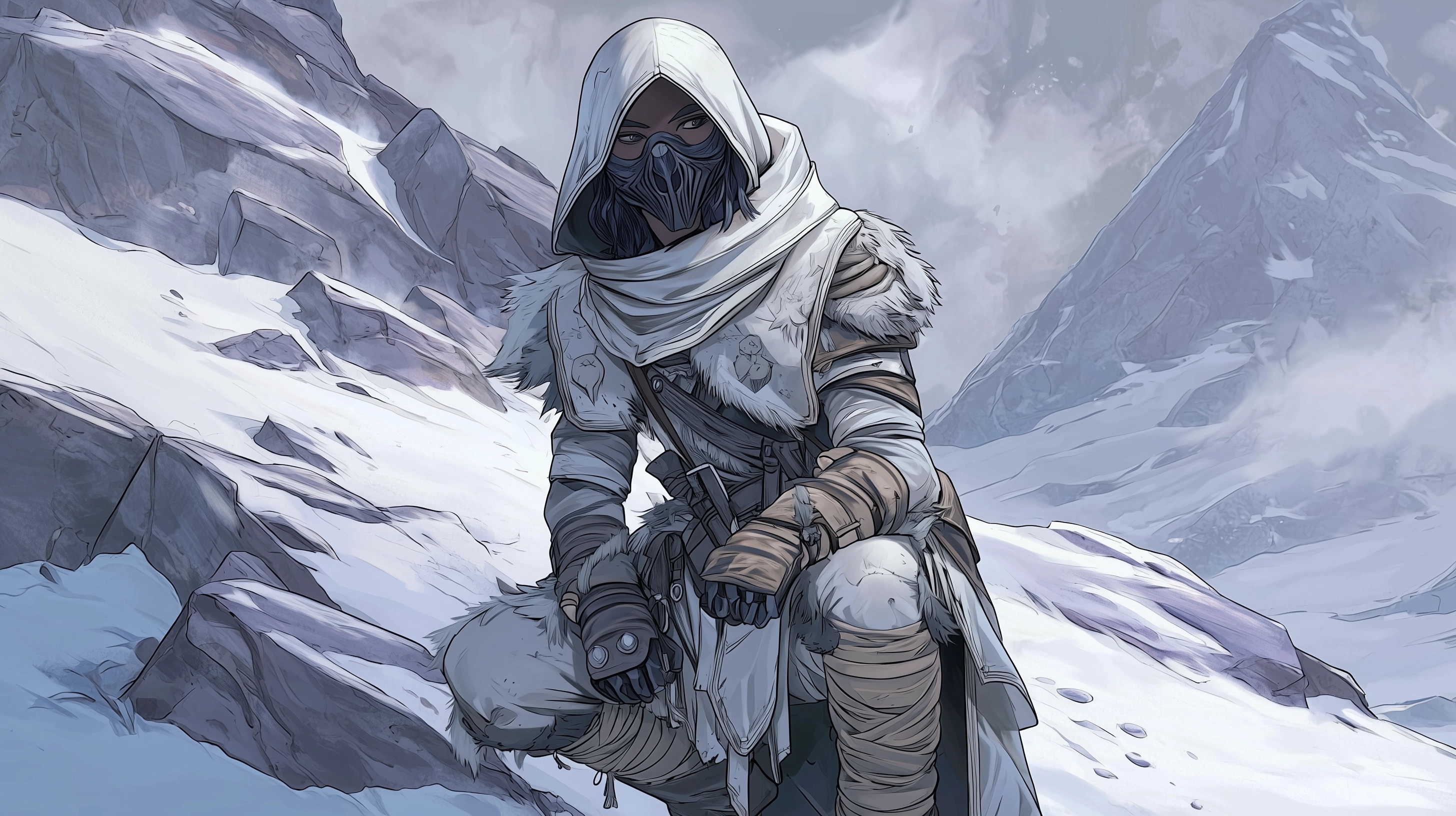
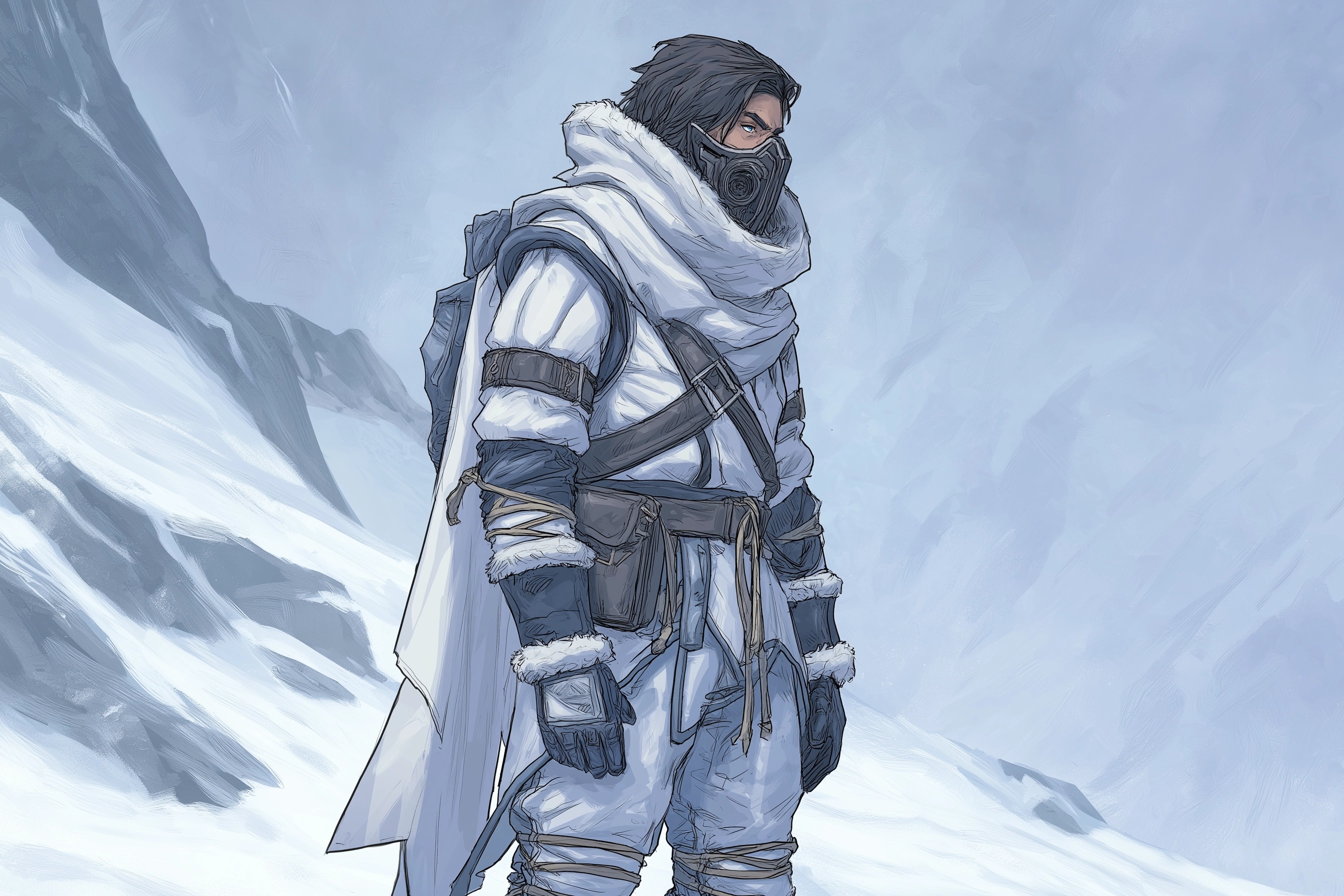
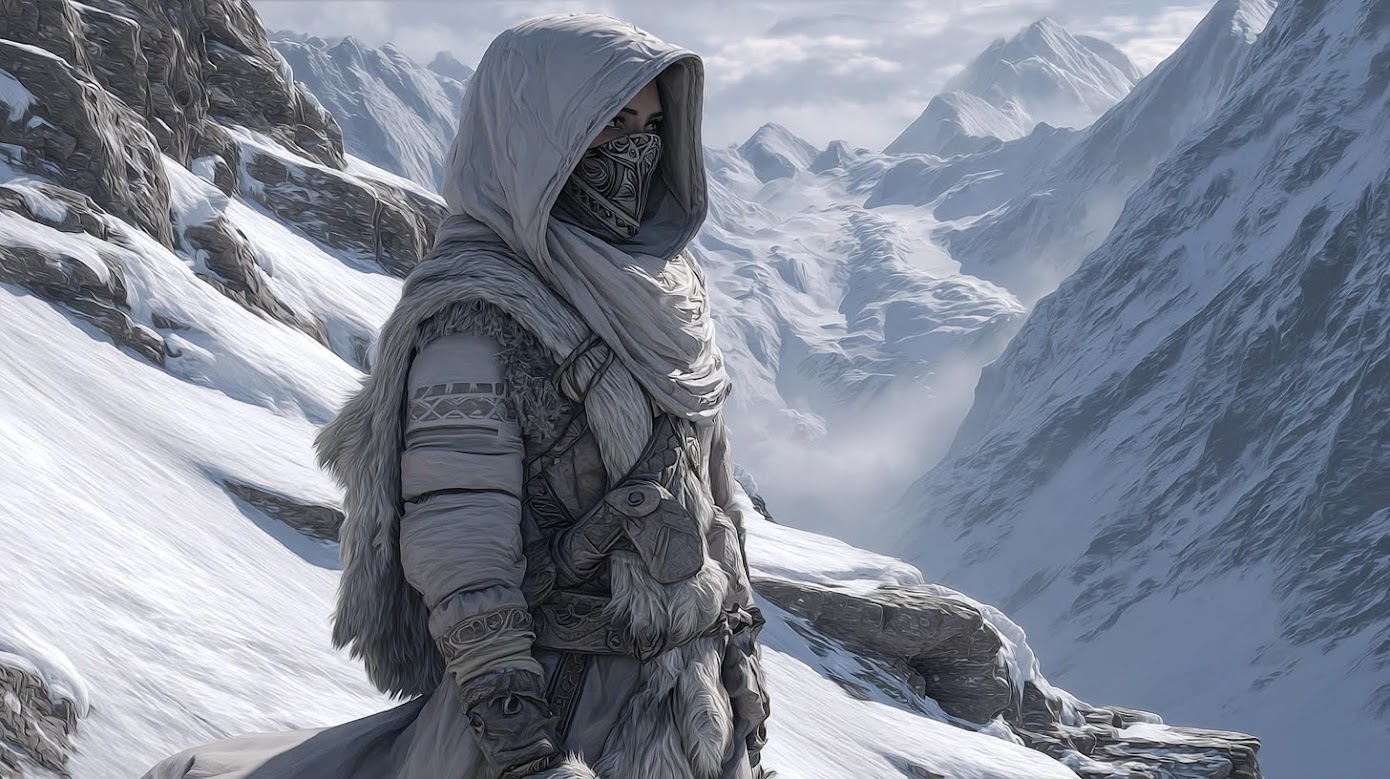
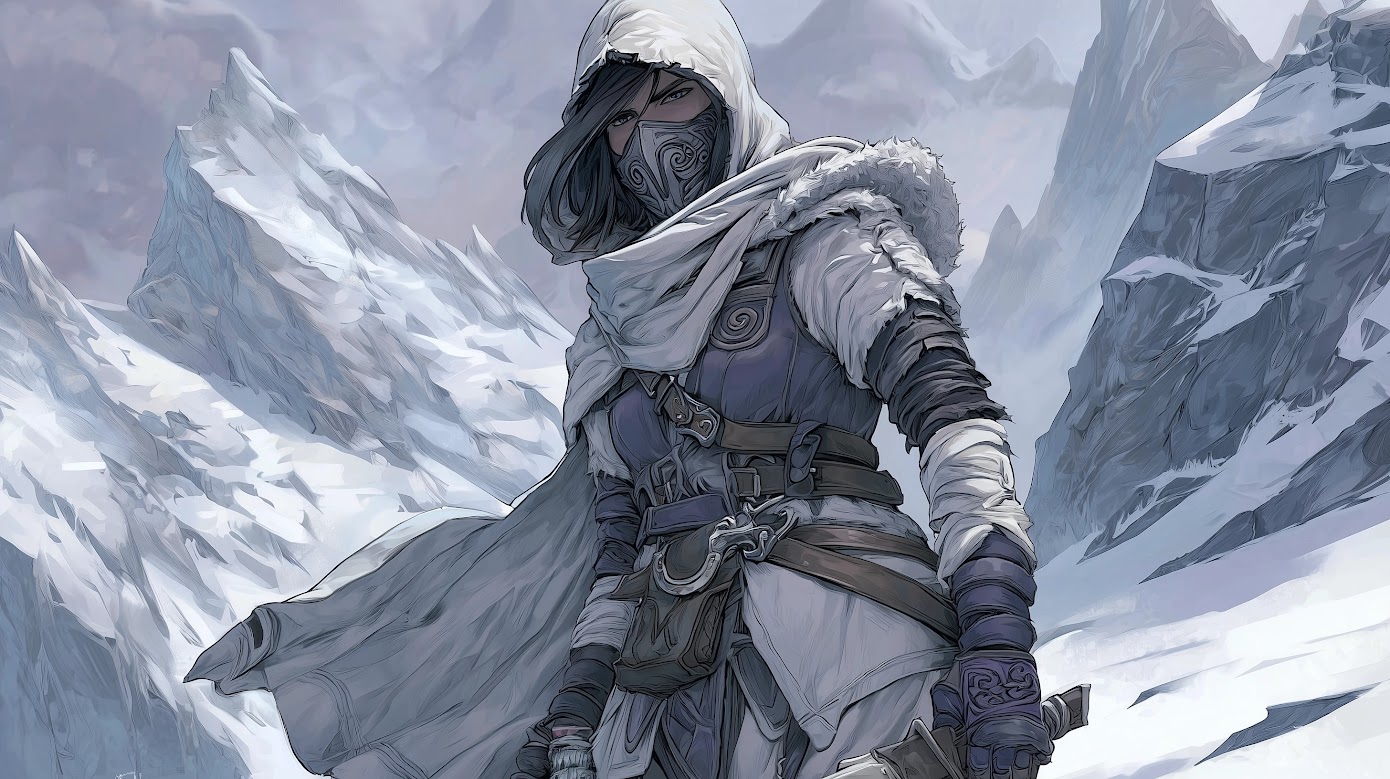
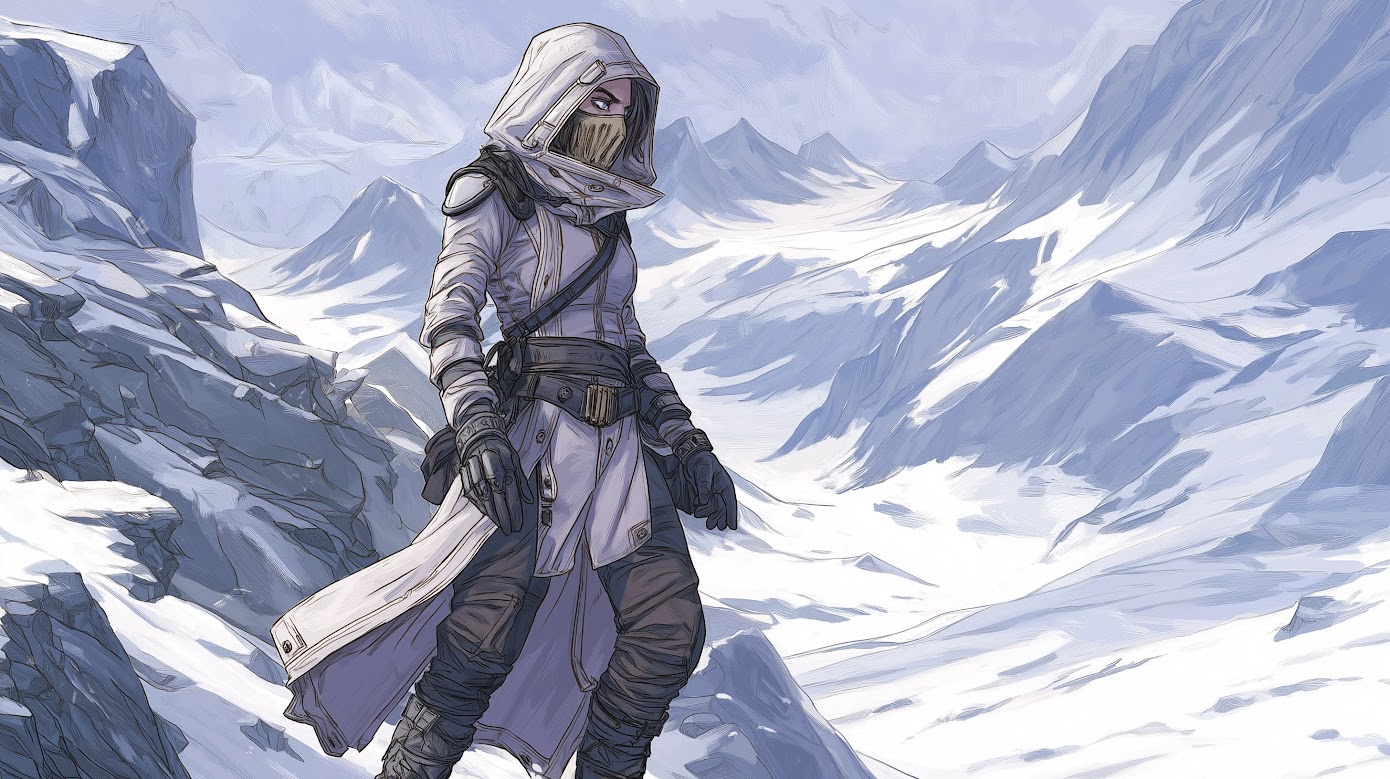
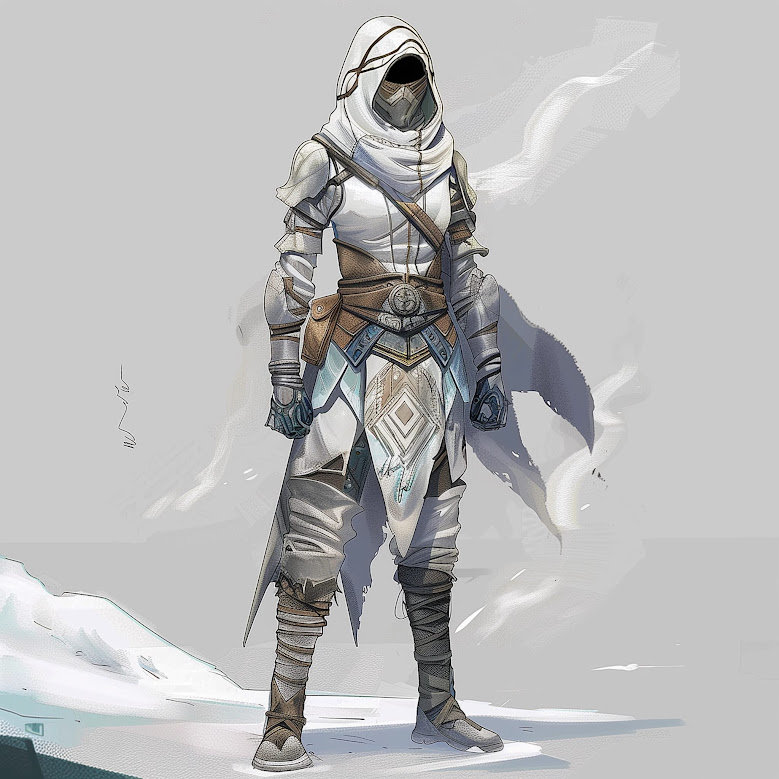
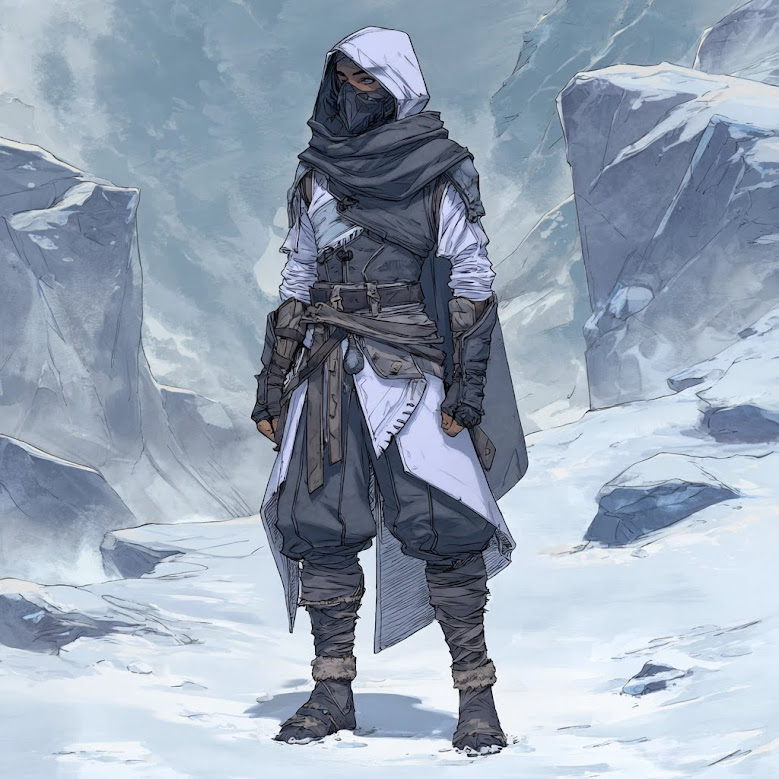



Arin seems to be a very popular name in your world.
Here are my Entries for the water continent Ulűri̋qi̋
A demonym adjective that's popping up just because when I started bringing all this to WA, I started with the oldest stuff and there are places elsewhere in the world where their are variants of some of these things, so for the wiki nature of WA, I figured I would make the distinction now and at some point probably change things. Thank you for taking a look at all of them! <3